Ask a Server SSD Expert
Planning the right solution requires an understanding of your project’s security goals. Let Kingston’s experts guide you.
Ask an Expert
It’s no secret that the market is flooded with SSDs that range from inexpensive low-performance drives to higher-priced extreme endurance, ultra-low latency drives. With so many to choose from, data center managers are often faced with several challenges when they buy, including general market availability, budgets, performance specs and immediate needs. But choosing the right drive isn’t as easy as finding the best price or seeing which has the fastest speeds on a spec sheet.
We talk to hundreds of customers, resellers and OEM manufacturers about how they choose drives so we’ve heard some interesting stories over the years about what hasn’t worked for them. Thus, we have compiled a list of the four most common mistakes people make when choosing a drive for their data center.
It might sound simple, but the biggest mistake is choosing a consumer-grade product instead of an enterprise-grade. There are several reasons people do this: price, name recognition, general rip and replace strategies and because you can get them from just about anywhere. However, consumer-grade products are rarely built for the same intensive 24/7 operations that enterprise drives demand.
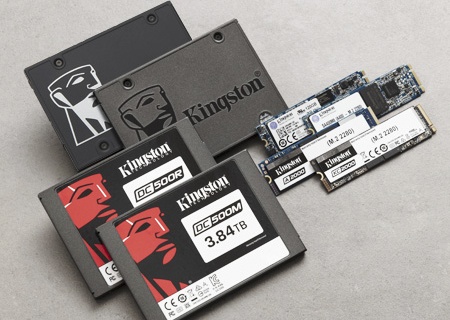
Enterprise drives are tested on Enterprise platforms – on servers behind RAID controllers – not on desktops. In fact, if a drive hasn’t been tested on an enterprise platform, it might not be even recognized when it gets installed. A consumer drive might work initially but when you deploy several hundred of them, you will realize they simply don’t work for long-burn enterprise applications.
Also, the new client drives use exotic caching schemes – reconfiguring NAND where part of the flash is carved out for caching. In short, you’re asking for trouble if you put that in a RAID configuration and throw big workloads at them.
It might be good for a low-cost purchase, but it’s incredibly dangerous when you actually want to use it on an enterprise scale. Drives are now tailored for applications and when used outside that application they run into more technical issues. Also, solving a client SSD issue that’s being used in an enterprise application will almost be impossible to get manufacturer support.
Nobody ever got fired for buying SSDs that didn’t wear out – but people will overestimate their write needs because they use old methodologies in estimating, “1DWPD on a 240GB vs 1TB drives today.” Choosing the endurance range for the actual enterprise applications could affect the BOM cost of their system.

In addition, some environments are far more read or write intensive. If you have an application that does more reading vs. writing (for example a VOD streaming service or database warehousing) and you purchase a high-write endurance drive, then you’re paying for something that you simply don’t need. Similarly choosing a read-intensive drive for a database logging or caching service wouldn’t be optimal because of the write-intensive activities.
Endurance of a drive also rears its head when selecting a drive that has full capacity versus an overprovisioned (OP) drive. You lose performance when buying the full capacity as written at 250GB/500GB/1TB. Once the drive achieves 90% capacity, the data must be completely erased and then written over. This impacts random read/write and latency, resulting in huge dips in performance. Using an OP drive allows much of these deletion/rewriting actions to happen on a clean state because the clean-up happens in the overprovisioned area resulting in nonimpact application performance.

When evaluating drives, there are two ways of doing it: you either trust the specs on a data sheet from the manufacturer or you put the drive through its paces using your exact setup and testing scripts. If you’re just trusting the specs, you don’t always know how the drives were tested to achieve their peak or average performance numbers or if it would match your working environment. Thus, we recommend testing SSDs to your specific benchmarks before you make a large purchase.
At Kingston, we test our enterprise products across multiple server platforms, using multiple RAID controllers either from third parties or OEMs. We run our drives through a rigorous suite of compatibility, IO performance, latency and longevity tests, and evaluate every sector of a drive for consistency. Client drive test modes don’t go through any of those exercises at all because most are only focused on performing well on a single processor and application.
In addition, Kingston leverages a variety of scripting and data sets. We do a long preconditioning to the SSD prior to recording performance data to ensure the drive gets into a steady-state performance profile. We publish real-world results by testing the entire span of a drive and not just a portion of the drive. IOPS and latency measurements are done at short intervals (every I/O or ½ second, we take a measurement to get QoS metrics) but client drives might be every 5 seconds which might skew true performance indicators.
We once heard of a major motion picture studio that was buying drives on Amazon just because some executive found a cheap option. But you get what you pay for if you’re not buying through a reputable source for enterprise-grade products. If you’re buying on Amazon or from another consumer e-commerce retailer, you may be getting an off-brand, or the devices may not be exactly what you think they are.
Most channel resellers, or even the manufacturers themselves, have dedicated teams to help you find out what the best option is for your given application. Sometimes it’s an off-the shelf product that’s already commercially available and they can not only sell it to you, but also give you the direct engineering-level support should something go wrong. Other times, you may need something specified for a custom build and having your engineers speak with the manufacturer directly helps to identify exact working environments, data strain, and application-specific constraints on the system.
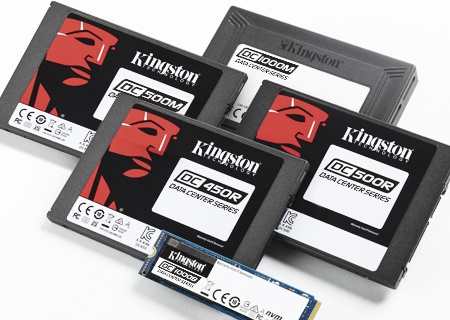
A few years ago, there was another manufacturer of custom servers that used cheap off-brand consumer drives employing a RAID schema with 24 SSDs in a box. The idea was that the drives were so cheap, if they failed, they’d just rip and replace them. This worked for the first year and a half, but the systems started losing seven to ten drives a week. At some point, choosing cheap off-brand drives becomes self-defeating, because replacing consumer drives with that frequency adds up.
The company has since made the switch to Kingston’s enterprise-grade drives and immediately saw the benefits in longevity, performance, and direct support from Kingston. Having an engineering communication path to your SSD supplier allows them the confidence to quickly remedy problems and avoid supply issues if a drive has been discontinued, recalled or a new generation is released.
Now that we know what the mistakes are when choosing SSDs, we can do our best to avoid making them. You can always just grab something off the shelf but taking the time to understand your needs then searching for the right SSD to suit those needs will always serve you best in the long run.
#KingstonIsWithYou

Planning the right solution requires an understanding of your project’s security goals. Let Kingston’s experts guide you.
Ask an Expert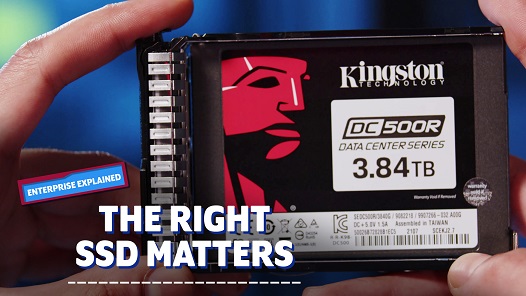
Choosing the right SSD is important since not all SSDs are alike. When it comes to data centers, choosing an SSD with the right performance consistency with low latencies that’s specifically built for enterprise and data center workloads is key for consistent and reliable performance.
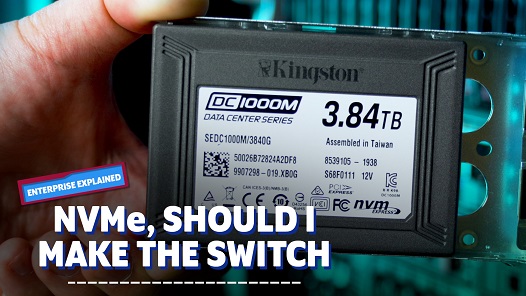
With the rise of data, need of edge computing and edge networks data center upgrades with NVMe SSDs enable more possibilities than before.
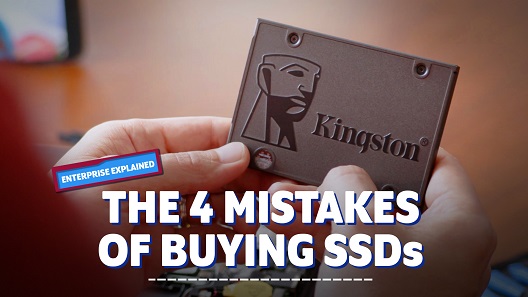
SSDs are all alike, right? You plug it in and instantly have all of that Flash Memory available for your workload? Right? If you answered yes, then you’ve probably fallen to one of the 4 biggest mistakes you could make when selecting your SSD.
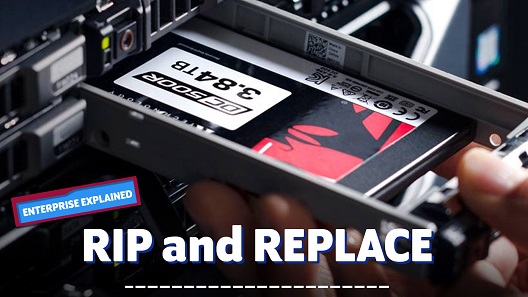
Some enterprises still make use of client SSDs to handle high-intensity server tasks, then rip & replace them when they fail to maintain the required standard of performance. Learn why that’s a false economy and how enterprise-level drives can increase organizational efficiency.